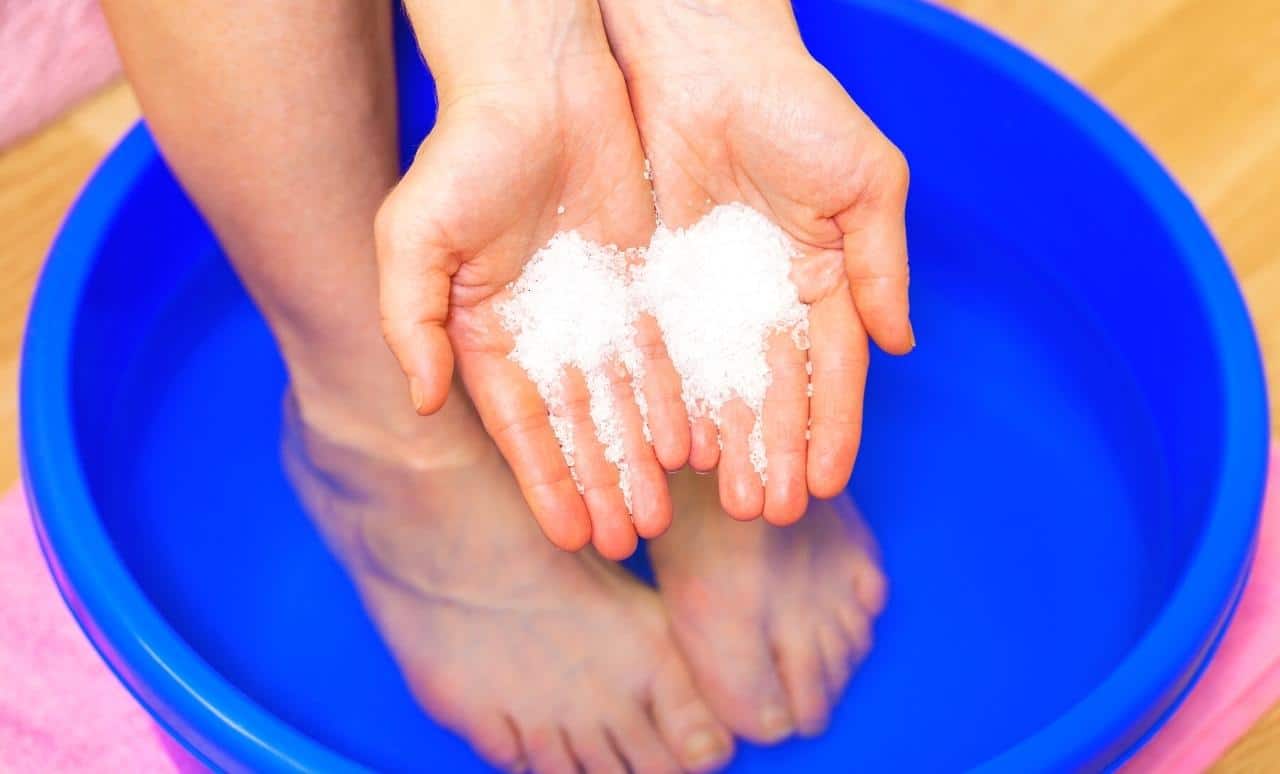Are Epsom Salt Foot Soaks Worth It? 4 Benefits for Using in a Foot Soak
The largest organ in the body is the skin. As our skin is the largest organ in our body, our feet also need to be cared for. Our feet work hard all day so foot care should not be neglected. Epsom salt is a popular treatment for stress and muscle aches. Epsom salt foot soaks can be used for many foot-related complaints.
Epsom salt is a naturally occurring compound that has magnesium and sulfate. It also has a crystallized form. Epsom salt has been used for centuries to treat pain and other ailments. There is not much research to support many of the claims.
The Benefits of Epsom Foot Soaks
An epsom salt foot soak may be a good way to ease muscle soreness.
Some studies have suggested that magnesium may be able to penetrate the skin by soaking in Epsom salt baths. A study found that magnesium penetrates the skin's outer layer depending on how much salt is used and how long the soak was.
Although some people believe that soaking your feet in warm water can remove heavy metals and toxins from the body, the evidence is mixed.
The following benefits may be possible from magnesium being absorbed through the skin during an Epsom salt foot soak:
1. Decreased Symptoms of Athlete’s Foot
The Epsom Salt Council states that Epsom salt doesn't kill the fungus responsible for athlete's feet. It may draw out moisture, making the environment less attractive to fungus.
2. Easing Inflammation
Some people claim Epsom salt foot soaks remove toxins from the body. However, there isn't strong evidence. The magnesium may be absorbed through the skin and increase inflammation. Inflammation can be reduced, which may help with stiffness and pain associated with conditions such as arthritis or gout.
3. Skin exfoliation
Epsom salt's crystallized compound structure provides exfoliation for the feet. Soaking the feet in Epsom salt may reduce roughness and make your feet feel softer. To remove any dead skin, it is a good idea to soak your feet.
4. Reducing Odor
Foot soaks of any kind can help to reduce foot odor and keep feet clean. For overall foot health, it is important to keep your feet clean and free of bacteria.
How To Do It:
A foot soak should be between 100 and 92 degrees F to reduce soreness.
Warm water is used to soak the feet. These are the steps for Epsom salt foot soaks:
- Warm enough water should be added to a basin or foot spa to cover your feet to the ankles.
- Add half to three-quarters of an cup Epsom salt.
- Allow the feet to soak for 20-30 minutes.
- After the soak, dry your feet thoroughly and moisturize them.
Epsom salt foot soaks can dry out your feet so don't do it every night. To avoid dry feet, soak your feet only once or twice per week. Make sure to moisturize your feet after soaking them!
Warnings
Make sure you only purchase Epsom salts or foot soaks that are intended for human consumption. Although all Epsom salt is magnesium sulfate-rich, manufacturers make a variety of salts to suit different purposes. All Epsom salt chemically is the same. However, there are different grades. The label should have the USP designation for Epsom salt. USP means that the product has been tested for human use by scientists and it meets the safety regulations set forth by the United States Food and Drug Administration. Epsom salt is suitable for foot soaks and can be purchased at pharmacies, online, or in health food stores.
An Epsom bath foot soak should be considered safe for most people. However, there are some situations where it is best to consult a healthcare professional before you use the Epsom bath foot soak. People with very dry skin should not soak their feet in salty water. This can cause dry skin and make it more susceptible to cracking.
Because of the higher risk of infection, foot soaks of any kind are not recommended for those with diabetes. Regular foot soaks can increase dryness which can cause cracking and increase the risk of infection. Before using a foot soak, it is advisable to consult your doctor if you have any open wounds.
Some foot problems may not be treated with a foot soak. If you have any of these symptoms, it is worth speaking with a healthcare professional.
- Long-term tenderness following a foot injury
- Foot pain that doesn't go away within a week
- The foot may become reddened or swelling.
- open sores
Learn more about Making a Homemade Foot Soak with Epsom Salt: https://diyfeet.com/diy-foot-soak-with-epsom-salt-2

